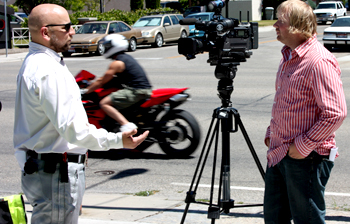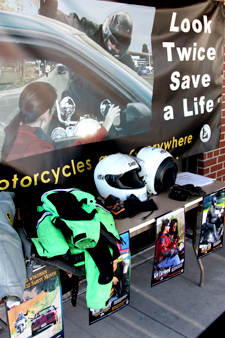
| CONNECTIONS |
IDAHO
ITD
HOME
511 TRAVEL SERVICES
IDAHO
DMV
ITD
NEWS
HIGHWAY
SAFETY
IDAHO STATE POLICE
STATE OF IDAHO
NIATT
NATIONAL
AASHTO
AAMVA
AAA of IDAHO
FEDERAL HIGHWAYS
FEDERAL AVIATION
IDAHO STATE POLICE
NHTSA
NTSB
TRB
U.S. DOT
TRANSPORTER
Archives
Milestones
Comments
Idaho
Transportation
Department
Office of Communications
P.O. Box 7129
Boise, ID 83707
208.334.8005
Fax: 208.334.8563


Increasing popularity of 'scooters' demands
motorcycle endorsement, training, caution
Warm weather and soaring gasoline prices have more Idahoans parking cars and trucks at home and trying motor scooters as a less expensive means to commute to work, shop and complete other daily tasks.
 Many recent motor scooter buyers in Idaho are new to riding and have little experience riding in traffic, do not wear proper safety gear and fail to understand the risks of riding two-wheeled vehicles, according to Pat Beale with the Office of Highway Operations and Safety.
Many recent motor scooter buyers in Idaho are new to riding and have little experience riding in traffic, do not wear proper safety gear and fail to understand the risks of riding two-wheeled vehicles, according to Pat Beale with the Office of Highway Operations and Safety.
“Statewide, motor scooter sales have steadily climbed since 2003,” Beale said. Sales in Idaho increased 24 percent during the first quarter of 2008 compared to the same quarter last year.
ITD makes no distinction between motor scooters and motorcycles.
“A scooter is typically smaller in size, has smaller wheels, an automatic clutch, and requires a step through. Mopeds always have pedals, travel slower than 30 mph and motors can’t exceed 50 cc in size,” Beale said.
Motor scooters require registration, a license endorsement for operators and will display a U.S. Department of Transportation decal certifying that the vehicle meets federal motor vehicle safety standards.
“All scooter riders need to have an endorsement on their valid driver’s license, their scooters must meet DOT standards, be licensed, and the riders must maintain liability insurance,” Beale said.
“Scooters are motorcycles, with all the same risks,” he said. Beale offered additional safety tips.
• Only licensed riders with a motorcycle endorsement can ride legally. All motor scooters need liability insurance. Children without a driver’s license should never ride motor scooters on a public road or highway.
Resources
Idaho STAR Rider Training Program – www.idahostar.org
Idaho Transportation Department – www.itd.idaho.gov
Idaho Transportation Department
Pat Beale, Motorcycle Safety Coordinator
(208) 334-8112Motorcycle Industry Council, Media Relations
(949) 727-4211 ext. 3027Motorcycle Safety Foundation, Media Relations
(949) 727-3227 ext. 3131National Highway Safety and Traffic Administration – www.nhtsa.gov
Governor’s Highway Safety Association – www.ghsa.org
• All riders should take the STAR riders training course. STAR graduates are 71 percent less likely to crash, and 81 percent less likely to die, than those not taking the training.
• Riders always should protect their heads with U.S. DOT-approved helmets whenever they ride. Idaho law requires all riders under the age of 18 to wear U.S. DOT-approved helmets.
• Cover up and wear sturdy clothing, gloves and shoes. Exposed skin is no match for asphalt in a crash – No sandals, flip-flops, skirts, shorts and tank tops. They provide no protection in a crash.
• Be visible - wear a florescent vest, bright riding jacket, light-colored helmet, use a headlight and avoid riding at night.
• Don’t drink and ride. Riding requires concentration, judgment and balance. All are adversely affected by alcohol.
• Ride with a defensive mindset – expect that other drivers do not see you. Scan for hazards and anticipate problems.
Motorcycle fatalities have increased in Idaho, from a record low of six in 1998, to 29 in 2007. Twelve motorcycle fatalities occurred in Idaho from January through May of 2008.
Published 6-20-8